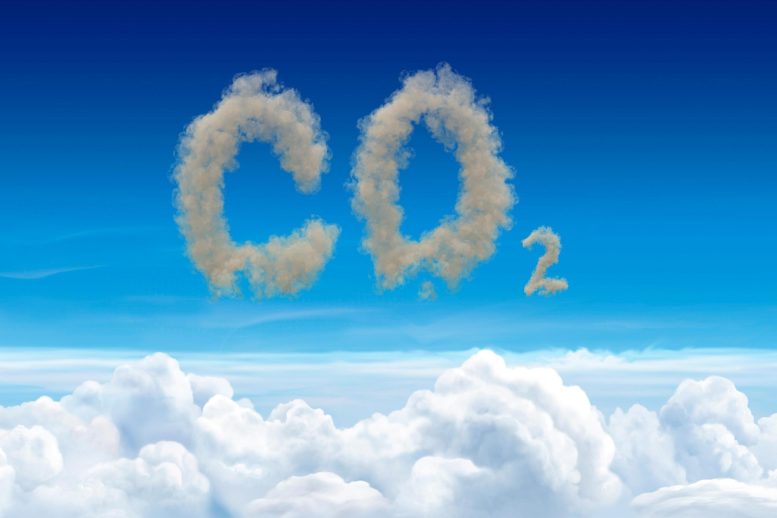
Bottom trawling significantly contributes to atmospheric carbon emissions by disturbing ocean sediments, a study finds. This method not only harms marine ecosystems but also releases vast amounts of carbon dioxide, doubling the emissions from the global fishing fleet’s fuel use. Immediate policy action is urged to address this overlooked source of carbon pollution and mitigate its impact on climate change and ocean health.
A landmark study has uncovered that bottom trawling contributes to the release of as much as 370 million metric tons of carbon dioxide annually into the atmosphere. The study highlights that the areas of the East China Sea, Baltic Sea, North Sea, and Greenland Sea are the most significant contributors to this environmental impact, showcasing the largest climate footprints from trawling activities.
Scientists have uncovered that bottom trawling, a method involving the dragging of a heavy net across the ocean floor, plays a previously unrecognized role in atmospheric carbon emissions. Amid global efforts to reduce emissions from fossil fuels, deforestation, and other activities, the research highlights bottom trawling’s contribution to carbon pollution by disturbing seafloor sediments and releasing carbon into the atmosphere.
A previous study found that part of that disturbed sediment carbon turns into carbon dioxide underwater. Today’s study finds that 55%-60% of the carbon dioxide produced underwater by bottom trawling will make it into the atmosphere within nine years.
The amount of carbon released by bottom trawling into the atmosphere each year is estimated to double the annual emissions from fuel combustion of the entire global fishing fleet — about 4 million vessels.
The Environmental and Climate Effects of Bottom Trawling
“We have long known that dragging heavy fishing nets — some as large as ten 747 jets — across the ocean floor destroys sea life and habitats,” said Dr. Trisha Atwood of Utah State University and National Geographic Pristine Seas.
“Only recently, we have discovered that bottom trawling also unleashes plumes of carbon, which otherwise would be safely stored for millennia in the ocean floor. Our study is the very first to show that over half the carbon released by bottom trawling eventually escapes into the atmosphere as carbon dioxide over the span of about ten years, contributing to global warming. Much like destroying forests, scraping up the seafloor causes irreparable harm to the climate, society, and wildlife.”
The study was conducted by a global team of climate and ocean experts from Utah State University, NASA Goddard Institute for Space Studies, the University of California Santa Barbara, Columbia University, James Cook University, and National Geographic Pristine Seas.
The researchers used data on bottom trawling carried out globally between 1996-2020 and sophisticated models to calculate how much of the carbon dioxide produced by bottom trawling ultimately enters the atmosphere. This study builds on recent foundational research finding that the amount of carbon dioxide released into the ocean from bottom trawling is larger than most countries’ annual carbon emissions and on the same order of magnitude as annual carbon dioxide emissions from global aviation.’
Global Hotspots and the Urgency of Action
The new research identifies ocean areas where carbon emissions from bottom trawling are especially high, including the East China Sea, the Baltic and the North Seas, and the Greenland Sea. The researchers conclude that Southeast Asia, the Bay of Bengal, the Arabian Sea, parts of Europe, and the Gulf of Mexico are also likely major sources of carbon emissions due to trawling, but we currently lack sufficient data on the extent and intensity of bottom trawling in these areas.
“Right now, countries don’t account for bottom trawling’s significant carbon emissions in their climate action plans,” said Dr. Enric Sala, National Explorer in Residence and Executive Director of Pristine Seas. “Our research makes it clear that tackling these and other ocean emissions is critical to slowing the warming of the planet, in addition to restoring marine life. The good news is that reducing bottom-trawling carbon emissions will deliver immediate benefits. The bad news is, delaying action ensures that emissions from trawling will continue seeping into the atmosphere a decade from now.”
The new study also assesses what happens to the carbon that remains trapped in ocean waters after bottom trawling takes place. It concludes that between 40%-45% of the total carbon dislodged from the ocean floor by trawling remains in the water, leading to greater localized ocean acidification. This increased acidity damages plant and animal life in the area where the fishing activity takes place.
“There are more issues with bottom trawling than just the impacts from carbon — biodiversity and sustainability for instance,” said Gavin A. Schmidt, the Director of the NASA Goddard Institute for Space Studies. “But this ‘marine deforestation’ is large enough to be noted and assessed. Hopefully, this can lead to policy efforts that can try to maximize benefits across all of the impacts.”
Reference: “Atmospheric CO2 emissions and ocean acidification from bottom-trawling” by Trisha B. Atwood, Anastasia Romanou, Tim DeVries, Paul E. Lerner, Juan S. Mayorga, Darcy Bradley, Reniel B. Cabral, Gavin A. Schmidt and Enric Sala, 1 December 2023, Frontiers in Marine Science.
DOI: 10.3389/fmars.2023.1125137









Besides dramatically increasing the profits for corporations that practice trawling techniques by scooping every living thing into nets brought to the surface there is another aspect: desertification of the ocean floor. Creating vast “parking lots” on the bottom of the sea that no longer sustain marine life by removing all the plant life. Compare that situation with the impact of Marine Sanctuaries which produce marine life “like the old days” before trawling.
“Our study is the very first to show that over half the carbon released by bottom trawling eventually escapes into the atmosphere as carbon dioxide over the span of about ten years, …”
For perspective, the estimate of 370 million tons is about 1% of the fossil fuel annual emissions.
“…, leading to greater localized ocean acidification. This increased acidity damages plant and animal life in the area where the fishing activity takes place.”
I don’t see the supporting evidence for this assertion.